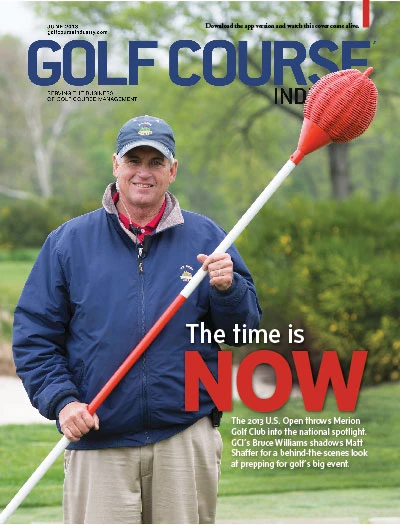 Monroe Miller Monroe Miller |
When you’re my age, attention has to be paid to the generation gap. Slacking off leads to a slide into isolation and even ignorance. It isn’t always easy for my generation who are more at home with paper, print and books than iPhones, iPads and touch screens. But I will also be the first to recognize the importance of change. Last year we planned our annual Wisconsin Turfgrass Association Winter Turf Conference. We are past the time when we held our meeting in a large hotel for two days, offering a full-blown equipment show, concurrent educational sessions with speakers, and a great social event the first evening. Now we’re down to one day, eliminated even tabletop displays for vendors, and offered educational lectures by our own faculty, grad students and maybe one out-of-state speaker. I believe our experience is mirrored across the country. Our winter conference has always been a dicey proposition, primarily due to snow. The lawn care/landscape guys plow snow and really need the off-season revenue. For others, just getting to the conference is dangerous if the roads are slippery. So this year, for the first time, we offered a simultaneous webinar. The meeting was held at a university auditorium that was equipped to broadcast the conference live. Thirty-two responded to the webinar, about a third of the number who attended in person. We followed up with a survey, and the response was overwhelmingly positive. Clearly, we’ll do it again, with a few changes. It is cheaper (our webinar was only $20), eliminates travel time, takes out the weather factor, and it can be watched later if work interferes. It is also a concept familiar to younger superintendents. However, I still prefer the face-to-face conferences, and probably always will. To me, there’s something refreshing about the personal connections made during a conference. I like the interaction that occurs when a group of turfies gather, and they often have a real dollar value to the organization that paid your way to attend. I think I have learned as much from other superintendents at these meetings as I have from the lecturers. There is always someone who has successfully dealt with the same issue you are now working through and may have some alternatives for you to think about. You cannot do this at a webinar! It has always been an advantage to learn directly from the presenter – the individual who did the research or developed the practice. Not only can you ask a question after the lecture, you can engage that person eye-to-eye in a conversation during the day. I’ve done that hundreds of times in my career. Attendance allows for networking, a contemporary term with real meaning these days. For some, networking is as big a draw as the speaker roster. Networking is a face-to-face activity. I have to add, somewhat selfishly, that I have made some wonderful friendships at conferences throughout my career. It may be an indirect benefit, but it is real nonetheless. I’ve heard it can actually be hard to focus during a webinar – phone calls, visitors and employee interruptions disrupt the lecture’s flow. The stop/start is distracting. Granted, you can archive a webinar to watch later, but that is another compromise. Although obvious, you cannot host an equipment show – tabletop or otherwise – at a webinar. That is a limitation. I’m no Johnny-come-lately to distance learning. Wisconsin kids who attended a rural, one-room school, like I did were students of the University of Wisconsin Extension’s “School of the Air.” We learned music from the radio program “Let’s Sing,” taught by a music professor and broadcast from Madison. Even in the 1950s, face-to-face was important enough that regional gatherings and a state festival on campus were highlights we looked forward to attending – in person. In the final analysis, we’re lucky to be able to tailor our educational programs to fit our circumstances, whether from a distance or in person. We get to choose.
|

Explore the June 2013 Issue
Check out more from this issue and find your next story to read.
Latest from Golf Course Industry
- Editor’s notebook: Green Start Academy 2024
- USGA focuses on inclusion, sustainability in 2024
- Greens with Envy 65: Carolina on our mind
- Five Iron Golf expands into Minnesota
- Global sports group 54 invests in Turfgrass
- Hawaii's Mauna Kea Golf Course announces reopening
- Georgia GCSA honors superintendent of the year
- Reel Turf Techs: Alex Tessman





